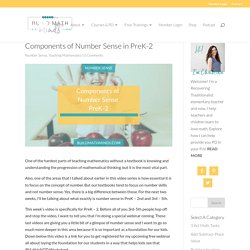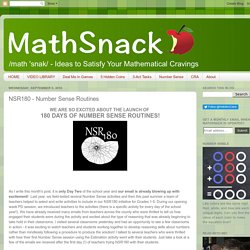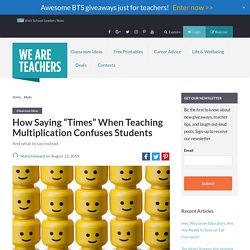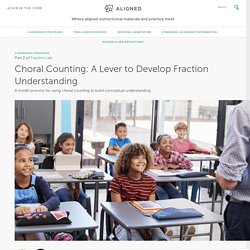

Twitter. Events — All Learners Network. Instructors: Erica Moy and Glenn Patterson These workshops are an overview of techniques for supporting struggling learners with specialized math instruction.

They are geared for Special Educators and math interventionists. This 6-hour (two 3 hour sessions) workshop provides participants with an overview of techniques for supporting struggling learners with specialized math instruction. This is geared for Special Educators and math interventionists. The learning outcomes include: Twitter. Twitter. Twitter. Tang Nickname Article 3-20-15.pdf. Inaba’s Place Value Puzzles: Making Connections and Asking “What If” – Embrace the Challenge.
Last week, my sixth graders helped me make connections between a puzzle I used in third grade and their current work with place value, specifically multiplying and dividing by powers of ten.

Sarah Carter (@mathequalslove/Math Equals Love) introduced me to Naoki Inaba’s mathematical puzzles via her blog. She shared Zukei puzzles for geometric reasoning. Afterwards, I saw a few other people posting about other puzzles by Inaba. (Apparently some have even been featured in the NYT… I feel so behind the times!) On Inaba’s website, I found a puzzle Google Translate identified as “Zero Zero Expression,” I suppose because it involves zeroes…? The original puzzles (found here) gives a series of one digit numbers and a sum, and asks the student to multiply the one digit numbers by 1, 10 or 100 to balance the equation. The puzzles increase in difficulty. In this case, in order to get the 700, one can’t simply multiply a 7 by 100. Third Graders at Work: “Where Do We Start?” Document available here. CRA for Composing and Decomposing Numbers. Okay, I’m having trouble finding different ways to say “composing and decomposing numbers” in my post titles!
But seriously, it’s just THAT important, so I keep writing about it. Our Kinders and Firsties should be doing these types of activities extensively, so it’s important to find lots of different ways to approach the skill. Today I present Clothespin Count. Students use strips that have dots showing 5 (pictured below) through 10. Choose the number that your kiddos need to work on. Like the number cards shown in the pictures? Number lines are so beneficial for... - The Kindergarten Connection. Early number sense plays role in later math skills. WASHINGTON (AP) — We know a lot about how babies learn to talk, and youngsters learn to read.

Now scientists are unraveling the earliest building blocks of math — and what children know about numbers as they begin first grade seems to play a big role in how well they do everyday calculations later on. Components of Number Sense in PreK-2 - The Recovering Traditionalist. Now those four lay a foundation for helping kids be able to pay attention to number sense relationships.

These four I discovered in the book, a lot of people call it Van de Walle book, but it’s Teaching Student Centered Mathematics. In that, there’s a small little part about the relationships that kids need to develop around numbers. Once I had read these, I’m like these are the things that so many kids are missing, they are: spatial relationships, one/two more and less, benchmarks of 5 and 10, and part-part-whole.
I consider these four being the net of understanding. That’s why I’ve got the hammock there. The first one, spatial relationships, is having a visual of a numeral that goes along with a numeral and using those visuals to help them see relationships. NSR180 - Number Sense Routines. As I write this month's post, it is only Day Two of the school year and our email is already blowing up with excitement!

Last year, we field-tested several Number Sense activities and then this past summer a team of teachers helped to select and write activities to include in our NSR180 initiative for Grades 1-5. During our opening week PD session, we introduced teachers to the activities (there is a specific activity for every day of the school year!). We have already received many emails from teachers across the county who were thrilled to tell us how engaged their students were during the activity and excited about the type of reasoning that was already beginning to take hold in their classrooms. Multiply vs. Times: How To Use Proper Multiplication Vocabulary. Math vocabulary can be tricky, full of words that students have never heard before or words that have alternate meanings in math than they do in daily life.

(I’m looking at you “mean.”) Choosing our words carefully can have a big impact on student understanding, especially when it comes to multiplication. Make this small change to your multiplication vocabulary today, so students can better visualize and comprehend this important concept. The word “times” doesn’t mean anything to students. Number Sense Routines - 2019 2-3.pdf. Freebie for Composing and Decomposing Numbers. My firsties are working on composing and decomposing numbers, specifically the number 5, and today we played a tried and true game, Under a Rock.

I had teddy bear counters to use, and I decided right then and there that In the Cave would be a lot more fun than Under a Rock. We used the Under a Rock recording sheet and adapted it, but I came right home, found some cute bear clipart from , and In the Cave was born! Using Interactive Number Lines to Support Number Sense. Choral Counting: A Lever to Develop Fraction Understanding. Fractions play a prominent role in students’ mathematical understanding and are part of the Major Work of elementary mathematics in grades 3-5.

Knowing this, we decided to make fractions the content and context of a professional learning experience for teachers and students called Fraction Lab. You can read more about Fraction Lab here. This professional learning experience included pedagogies of investigation and enactment. When we first began to plan for the experience, we considered the students we would be working with as well as the instructional materials available. From the lens of instructional materials, it was important to us to use high-quality aligned materials in our work with students, materials that would ensure access to the standards.
We read the EdReports review for the district-adopted program and examined the fraction units in both third and fourth grades. The pre-assessment also included two number lines, each with 0 plotted along with one other fraction. Ashley: 7. Steve Wyborney's Blog: I'm on a Learning Mission. – Sharing Thoughts About Education. Changing Numbers. What is Number Sense? More Than/Less Than Sort. How Many More? - Math Coach's Corner. Comparison subtraction is really tricky for kids.

Part of that is lack of exposure. We typically teach subtraction as take away, and that is certainly one of the subtraction structures. But we need to move beyond that and help students understand that comparing also involves subtraction. A common wording for comparison subtraction is how many more? There are lots of variations on that phrase: how much taller, how much more, how much faster, how many fewer, etc. Marla has 5 pieces of candy. A very common error is to say 5. Another way comparison subtraction can be worded is what is the difference? So how do we help children understand comparison subtraction. Graphing presents another great opportunity to highlight comparison subtraction. Jumpstart Student Reasoning and Number Sense, Grades 3-8 Webinar. Which One Doesn’t Belong – Fraction Edition – Educational Aspirations. My classes have been using a WODB board this year.

The board has been a permanent fixture in my room and it has been up since August. I came across the idea last year after reading Christopher’s idea and Joel’s example. I’m finding that it has been a great routine for my 3-5th grade math students. My goal was to change my WODB bulletin board every week, but it’s really being changed around 2-3 weeks or so. My boards started out as mainly shapes, but has moved to numbers and equations recently. My third grade students are in the middle of a unit on fractions. Today, the students completed an individual Which One Doesn’t Belong task.
Students were asked to create four different fraction multiplication models. Students then wrote down their solutions and folded the paper to hide them. The students took pictures and put them in their SeeSaw accounts. Like this: Like Loading... Related. Computation Dice Games. I was in a teacher’s room last week, and her kiddos were making equations to equal the number of the day, which was 44. I noticed that all the kids were using just two numbers in their equations (40 + 4, 50 – 6, etc.). I decided to try a little “evil” math on them, so I asked if anyone could make an equation with three numbers to equal 44.
Crickets chirping. Okay, so they needed a little more support. Card games en. Number Sense: the most important mathematical concept in 21st Century K-12 education.